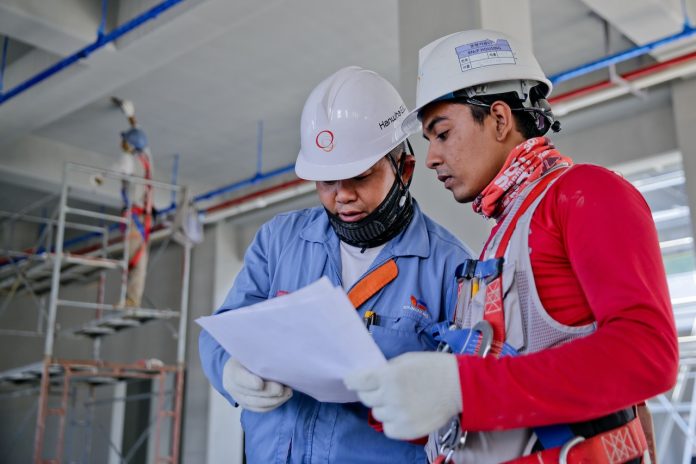Keeping up with industry trends is essential in today’s market, and the construction industry is no different. It’s constantly evolving, with new regulations, technologies, and demands shaping how materials are made, used, and recycled.
Staying current with these trends can be challenging for material suppliers and contractors. But it also presents opportunities for creating unique competitive advantages and meeting the expectations of customers and contractors for quality and cost.
From focusing on sustainability to changes in best practices, 2023 looks to be another year of flux. As we look to the year ahead and beyond, here are some key trends that we expect to shape the future of the construction sector.
Construction Industry Trend #1 — Sustainability
Sustainability has been a defining trend of the last decade, and we expect it to continue to be a significant focus in 2023 — especially in construction. There is already a growing demand for environmentally friendly, green building materials. These materials, made from sustainable and renewable resources, have a low impact on the environment throughout their lifecycle.
Alongside consumer demand, there’s also increasing pressure from governments and regulatory bodies to promote sustainability. Many countries have implemented policies and regulations that encourage or require using sustainable building materials in new construction and renovations.
For example, in the UK, the Environment Act 2021 created a legally-binding framework for sustainability after Brexit. It established legally-enforceable targets for air quality, water quality, biodiversity and waste management.
With both consumer demand and regulatory pressure for sustainability, we’ll likely see more construction companies becoming verified suppliers of sustainable materials. These verification schemes allow companies to demonstrate to potential clients that they comply with environmental regulations and follow sustainable practices.
Construction Industry Trend #2 — 3D Printing
The 3D printing trend is set to be key across a wide range of industries in 2023, particularly in building. In the construction industry, 3D printing has the potential to be used to create custom building components, such as structural elements, as well as entire buildings or structures.
Also, 3D printing can create moulds for traditional building materials, such as concrete and plaster, allowing for more efficient and cost-effective production.
One potential application of 3D printing in the building industry is the creation of affordable housing. Using 3D printing to create building components and structures may significantly reduce construction costs and make housing more affordable for a broader range of people.
While 3D printing is still in the early stages of development in the building material industry, we expect it to become more widespread in 2023 and beyond as technology advances and costs decline.
Construction Industry Trend #3 — Digital Transformation
3D printing isn’t the only area of digital transformation in the building industry in 2023. One way we expect this transformation to take place is through online platforms, which will make it easier for buyers and sellers to connect and facilitate the exchange of information and resources.
New software applications will also play a role in the digital transformation of the building materials sector. These applications will enable more efficient production and distribution of building materials, streamlining processes and reducing costs.
Alongside that, new technologies like drones and scanning equipment will expedite the project management process. These technologies will allow project managers to quickly render 3D models of construction sites and share them with clients quickly.
Construction Industry Trend #4 — Modular Construction and Prefabrication
As projects become more intricate in the coming years, we predict a surge in the use of modular construction methods. These methods allow the production of various project components off-site and their assembly on-site, saving time and money.
Alongside modular construction methods, 2023 will also see a resurgence of prefabrication. This process involves manufacturing building components in a factory and assembling them at a construction site. Prefabrication offers numerous benefits, including quicker construction times, consistent quality control, and a vast array of options for modular construction projects.
Finding Opportunities in Industry Trends and Changes
As the construction industry continues to evolve, new trends and changes will shape how materials are made, used, and recycled. From sustainability to 3D printing and digital transformation, these trends offer opportunities for those in the construction industry to create unique competitive advantages and stay ahead of the competition.
To keep up with the expectations of customers, contractors and clients, companies in the construction industry need to stay current with these trends and adapt to the changing landscape. With the right strategies and a focus on staying up-to-date, companies can thrive and succeed in this constantly evolving industry.

